Food diversity in Iran
Iranian food
The Iranian food, which is as old as the country itself, is consistent of a thousand different colorful ingredients. Every single ethnic group brings something exquisite to the table –both literally and figuratively!
Of course, a few millennia of civilization, massive exposure to neighboring countries and the cultural exchange with Asia and Europe are explanatory and have added to the many layers of Iranian food history.If you’re more drawn to the historical and cultural side of the country make sure to check out our customizable Classical Cultural tours of Iran.
Iranian food, falls within the range of right amount of spices, sour and sweet flavors create unexpected taste combinations which makes them work together magically; and it all leads to Iranian food becoming one of the most talked-about characteristics of the country.
We owe some of the culinary diversity to the vastly different weather in each region. As opposed to what you might have heard about the weather in Iran, it is not all a big desert. Although the desert is indeed one of the natural beauties found in it. We do offer nature tours such as Eco tours and Desert tours for the interested.
The prosperous lands of northern Iran grant access to a great variety of agricultural products and livestock animals which make Iranian food to be more of a diverse one among Asian food. Also, with the Caspian Sea so close, seafood is easily available in Iranian menus. The Iranian food specified to the Northern region is mostly based on rice, beef, fish and chicken and the flavors lean towards the sour side. The southern Iranian food on the other hand, much similar to Indian cuisines tend to be hot and spicy. Proximity to the Persian Gulf creates great biodiversity which has evidently affected the food in the southern regions. On a side note, we offer Island tours for those interested in the culture and traditional food of Iran’s southern islands.
In the following text we are going to talk about the most famous Iranian food in order to help you choose your desired Iranian food according to your dietary habits and enjoy different types of food on a travel to Iran.
Iranian Food: Breakfast
Let’s start our journey with breakfast, just like we start our day.
A lot like any other culture, bread is an inseparable part of the Iranian breakfast. Anyone looking to grab a bread or Naan, as it is called in Persian, is faced with a multitude of choices, Sangak, Lavash, Taftoon and Barbari, just to name a few, are some of the breads found in Iranians’ everyday grocery lists. Cheese, butter, honey, jam, herbs, and different nuts are essentials existing in every house in Iran. Halim and Adasi (lentil soup) are also some of the traditional hot Iranian food usually served as breakfast.
Iranian breakfast is almost always sided with a cup of tea or two, since Iranians like to start the day by drinking tea and continue throughout the rest of their day with the kettle on and the water boiling.
Common Iranian Dishes:
Iranian Stews:
There are several types of Iranian stews typically made by Iranians such as: Khorak, Khoresh and Dizi, the majority of which take a long while to cook but the results are always quite rewarding. Khoresh is mostly served with rice and consists of different herbs, onions, tenderized meat and other ingredients depending on what kind of Khoresh we are talking about. Ghormeh Sabzi or the Iranian herb stew is an honorable mention when it comes to Khoresh, which is rich with fiber and protein and strongly aromatic. Ghormeh Sabzi is one of the first dishes coming to mind on the topic of Iranian food.
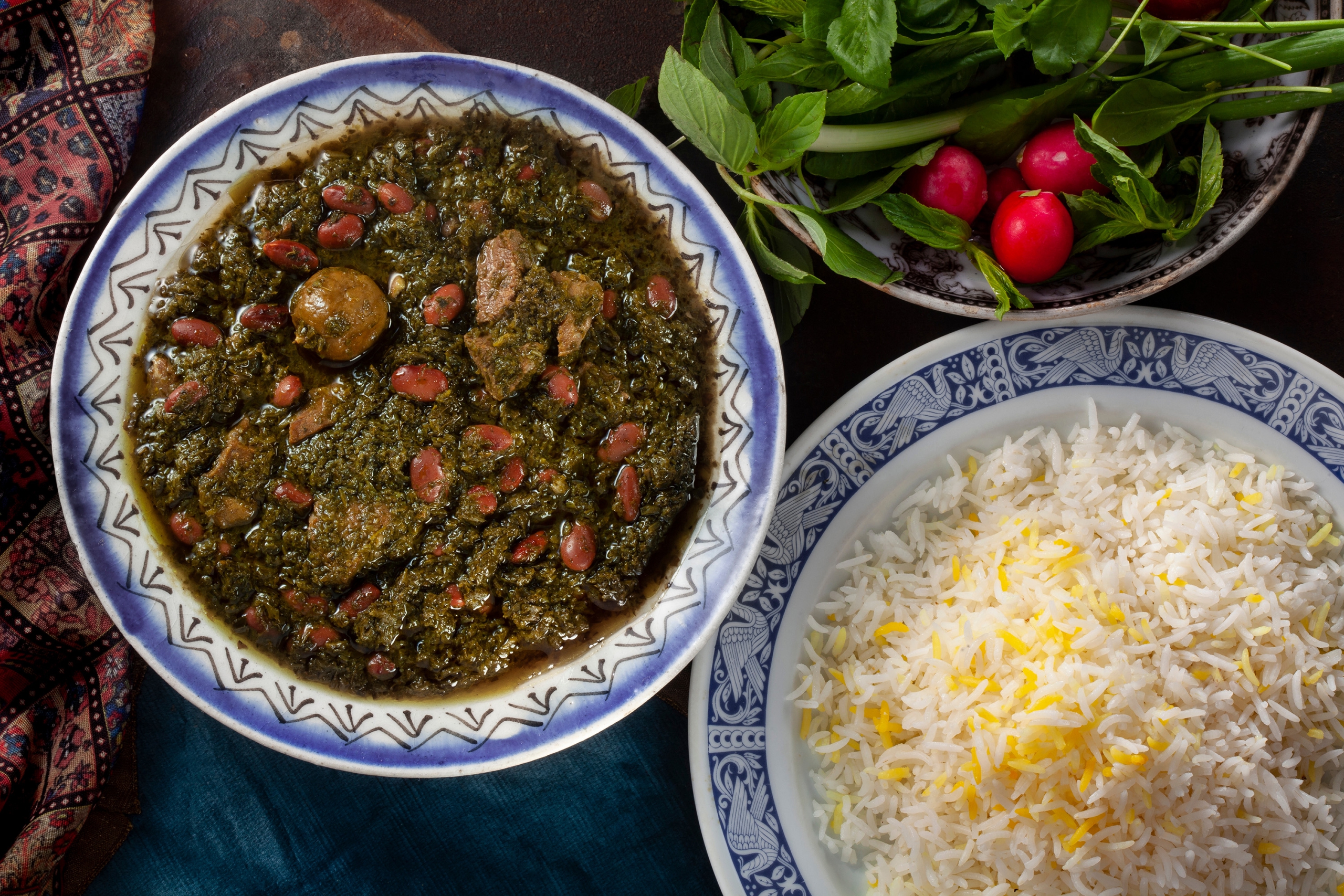
Rice and Pilaf:
Since the Safavid era, rice has been a fundamental element of Iranian food for centuries and it is still served as a staple dish alongside many other dishes. Dami and Polo are two of the popular Iranian rice cooking methods, mostly using white Bastami rice. Rice in the Iranian food could be accompanied by a selection of chopped vegetables, herbs, beans, fruits, and sometimes minced meat or chicken chunks to create a good number of rice-based Iranian dishes. Lubia-polo, Zereshk-polo and Tahchin are some of the well-liked pilafs you will find in Iran.
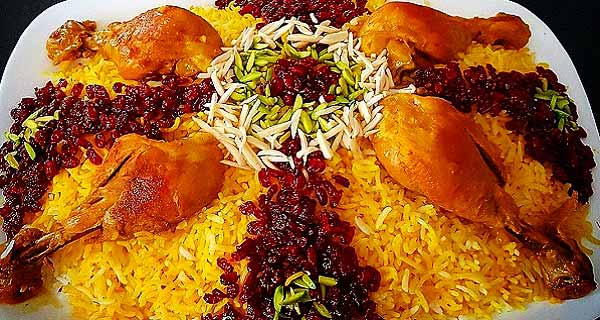
Tahdig:
Although not a meal, Tahdig is a common and vastly popular part of the Iranian food. It is basically scorched rice, bread or potato slices with a crunchy texture and is almost always cooked and served with the rice.
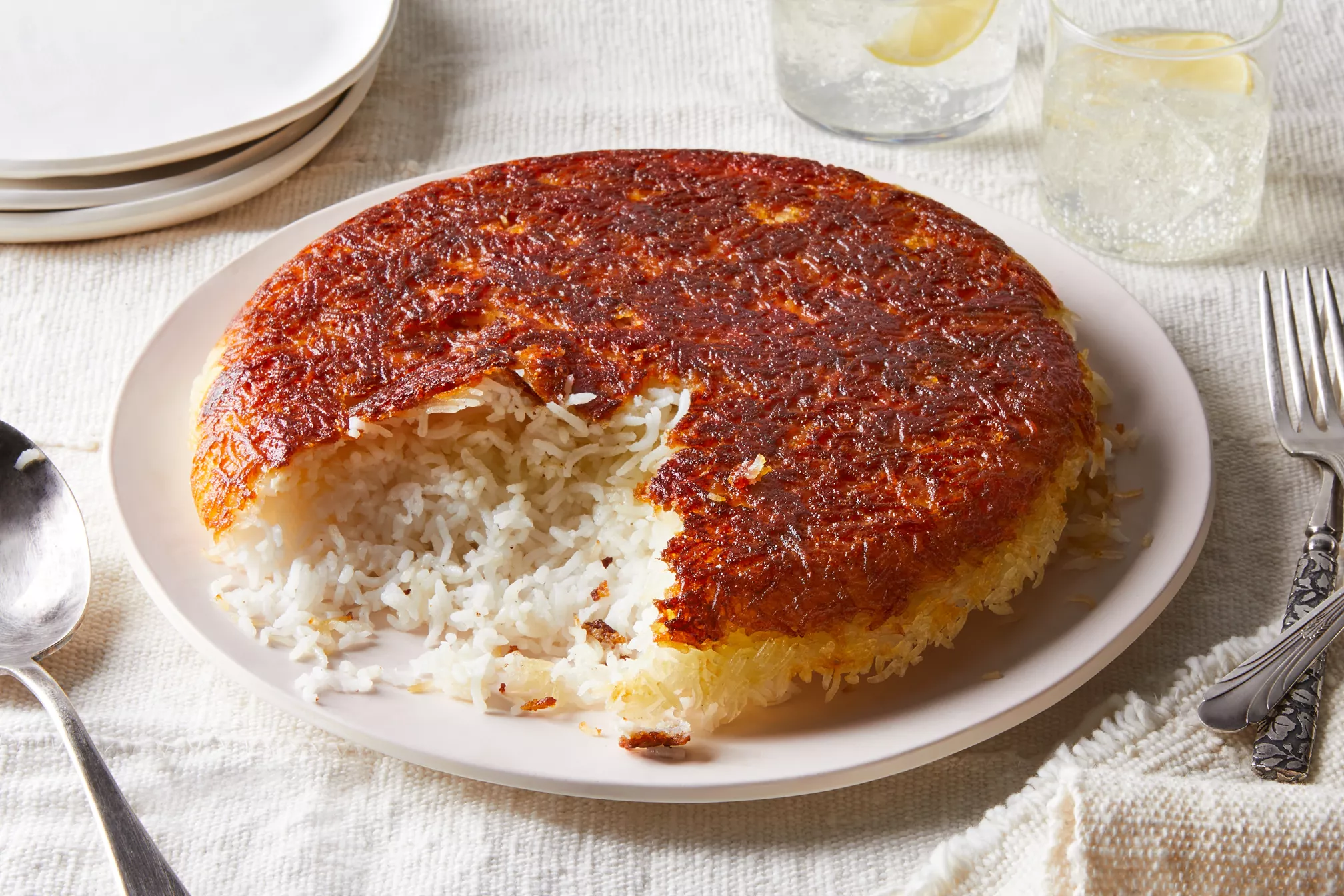
Kebab:
Different types of kebab are oftentimes ranked as the most popular Iranian food among tourists as well as locals. There are two ways to serve kebabs in Iran: either with steamed rice or bread and always with grilled tomatoes. Kebab served with rice is called ‘Chelo kebab’ and referred to as the national Iranian food. There are various kinds of kebabs original to Iran that Iranians take pride in, the most common ones being Kubide (minced meat mixed with cut onions), Juje (grilled pieces of chicken) and Tabei.
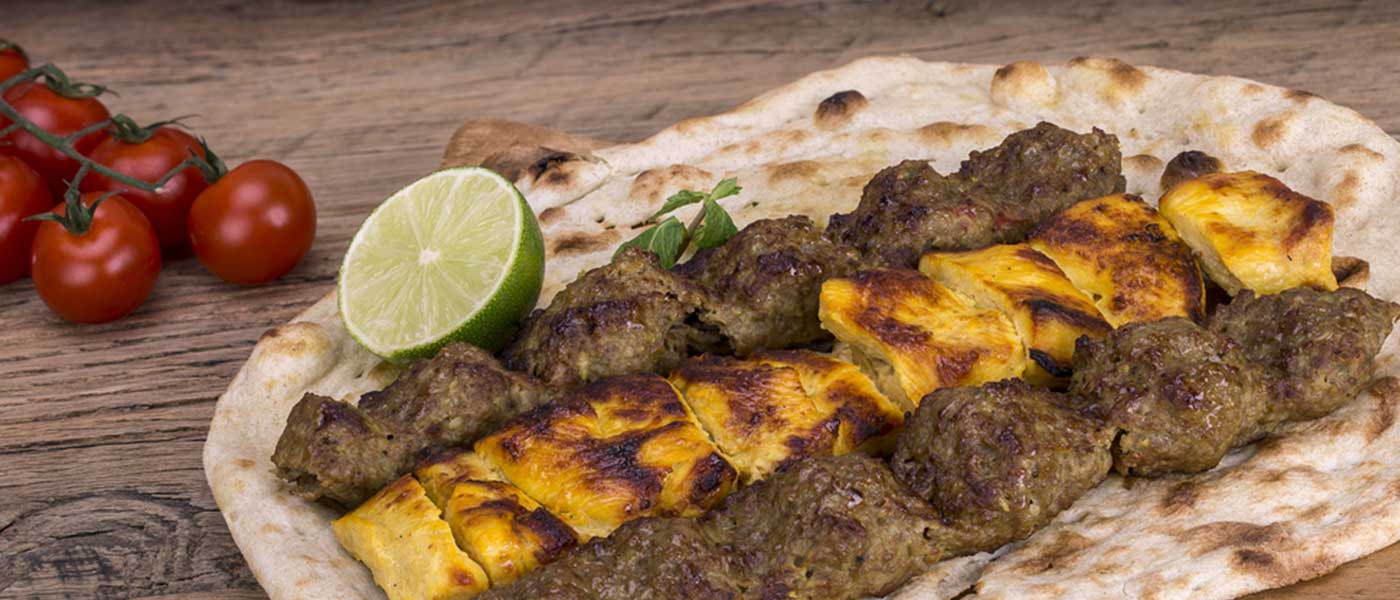
Kalepache:
Even though Kalepache is a majorly favored Iranian food among locals, it might not be everyone else’s cup of tea. But if you are adventurous with your food, trying Kalepache or Khash, which is simply boiled head and trotters of sheep, could be a unique experience. Although Kalepache is also traditional to a number of neighboring countries, it is safe to assume each country brings its own quirk to the food that makes it slightly different and more accustomed to the food palate of the region.
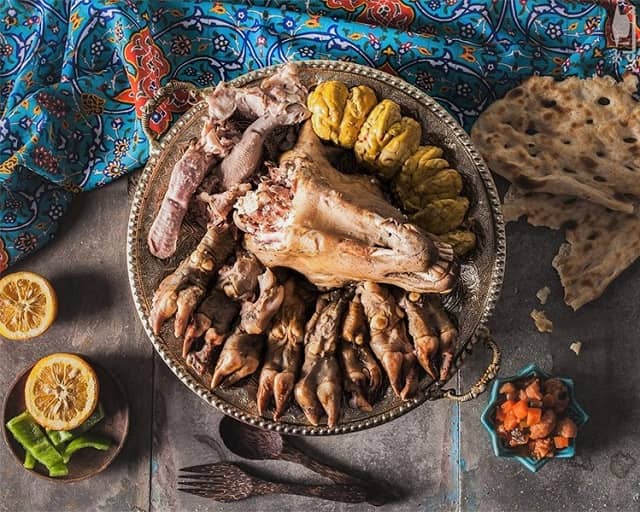
Ash and Soup:
Ash is a form of traditional Iranian soup differentiated from ordinary soup by its thickness and ingredients. Ashe Reshteh, mainly made of thin noodles, herbs and beans as well as Ashe Shole Ghalamkar are two of the conventional thick soups, well-liked in most Iranian households. There are also more diluted and watery types of soup cooked in Iran namely Soupe Jo and Adasi. Ash and Soup also can be used as appetizers before having the main Iranian food.
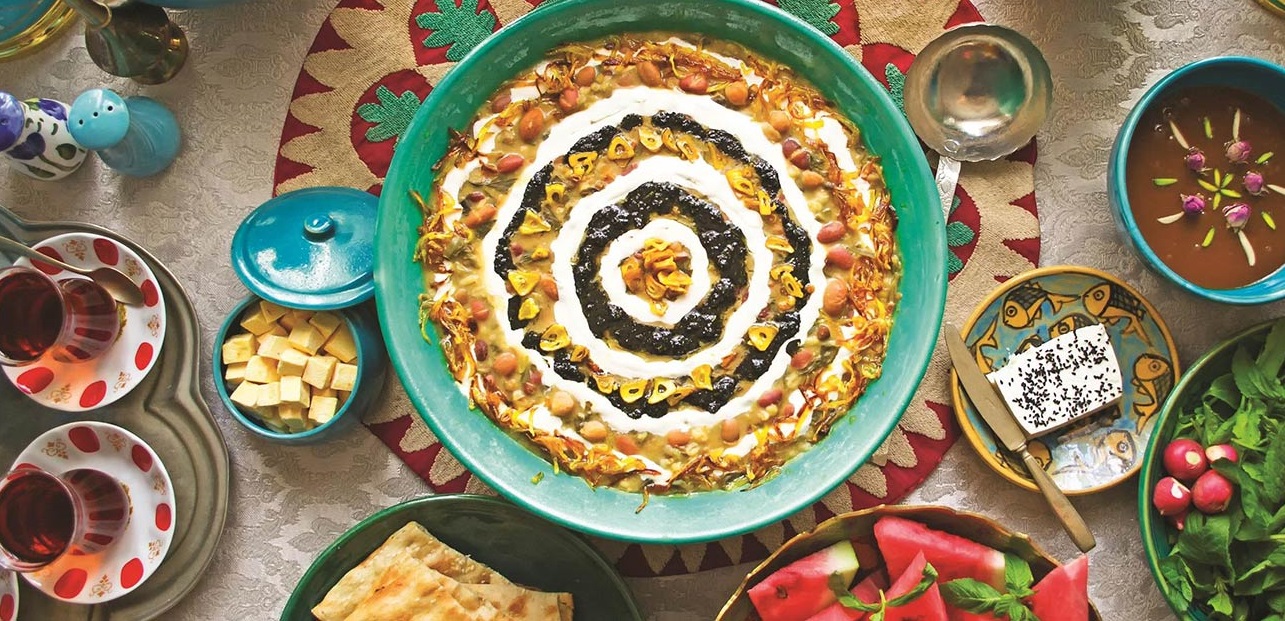
Shole Zard:
Shole Zard or Persian saffron rice pudding which is more commonly served as a desert, is very sweet and a lot of the time is associated with religious intents in Iran to which there are two reasons: first off, it is customary to break the fast with Shole Zard during Ramadhan (or Ramazan) in Iran, and the second reason concerns Nazri. Nazri is the food cooked and given away to others, especially the poor, after one’s wish is achieved and Shole Zard is often cooked as Nazri. Be aware of Shole Zard if you have a sweet tooth, since being one of the most delicious Iranian food helps it to steal your heart!
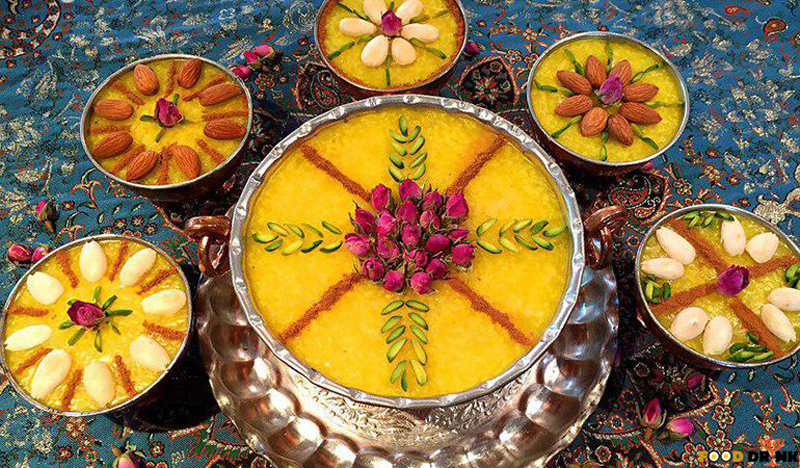
Vegetarian Options:
If you are interested in vegetarian food options, the good news is that the Iranian food will offer you plenty. Vegetable-based dishes make up a great percentage of Iranian food and are available for ones in search of a healthier life-style.
KuKu:
To simply put it, Kuku is egg wrapped in several ingredients like herbs or potatoes and then grilled to perfection. Herb Kuku or Kuku Sabzi plays a culturally prominent role since it is served at Nowrouz, spring equinox which is celebrated by Iranians as the new year. As a national Iranian food for Nowrouz, Iranian also eat rice, cooked with special vegetables and fish.
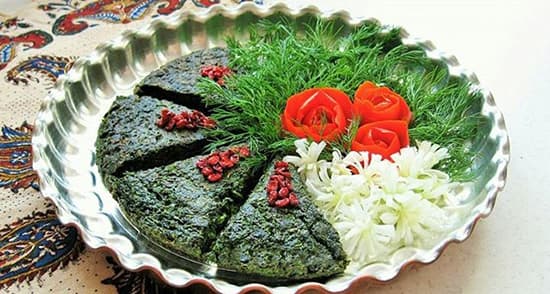
Mirzaghasemi:
Mirzaghasemi, also known as Persian eggplant dip, is an appetizer (sometimes served as a main dish) original to Gilan province in northern Iran. It includes eggplants, responsible for the smoky flavor, eggs, garlic and tomatoes providing a high nutritional value. This is also one the Iranian food loved by many which means being a northern Iranian food does not make it a local one.
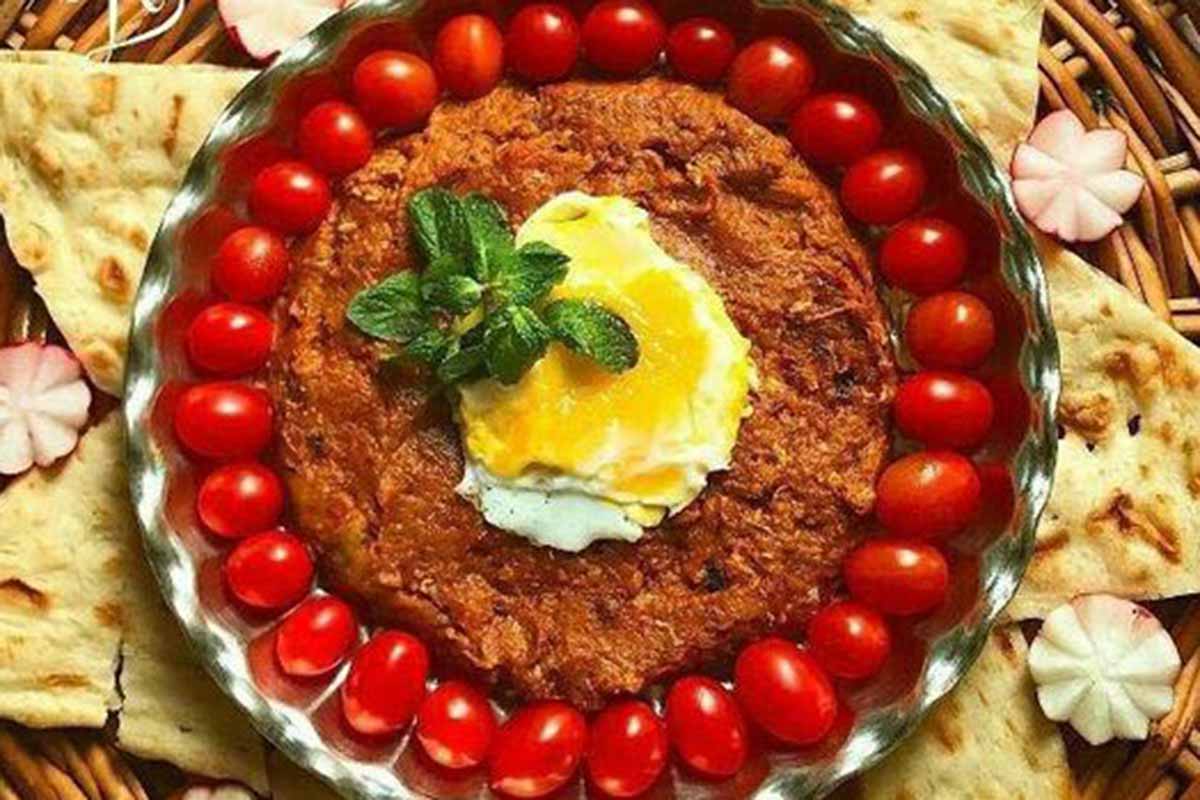
Salad Shirazi:
Salad Shirazi is regularly found on every Iranian Table (or sofreh!) as a side dish. A number of vegetables including tomatoes, cucumbers and onions as the main ingredients are cut and mixed in a bowl together with vinegar or lime juice. The stunning color combination compliments the overall look and brings a new life to the food table.
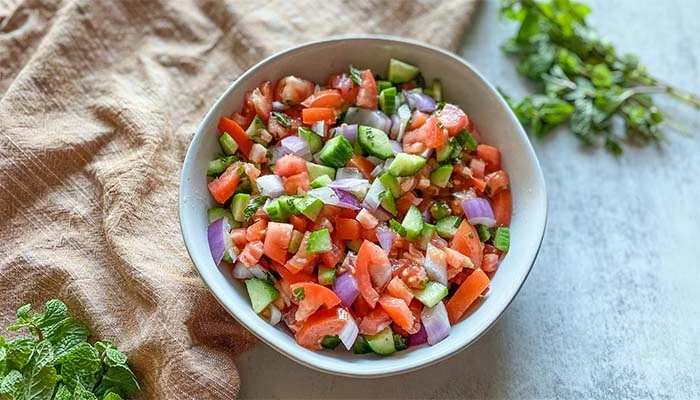
Whilst Iranian food contains a remarkable history and is currently one of the center-points in Iranian culture, it is time-consuming to cook and unfortunately as the city life gets busier people find less and less time to contribute to traditional ways of Iranian culinary arts. But hopefully the varied and flavorsome dishes will live on to be a part of Iranians’ everyday life for much longer.
Medical science and medical care, just like the food, has a long history in Iran. If you’re interested in an Iran Medical tour, we would be happy to help you with the matter.
Our Tailor-made tours are also suitable for individuals who like the idea of being involved in the planning of their own trip.
